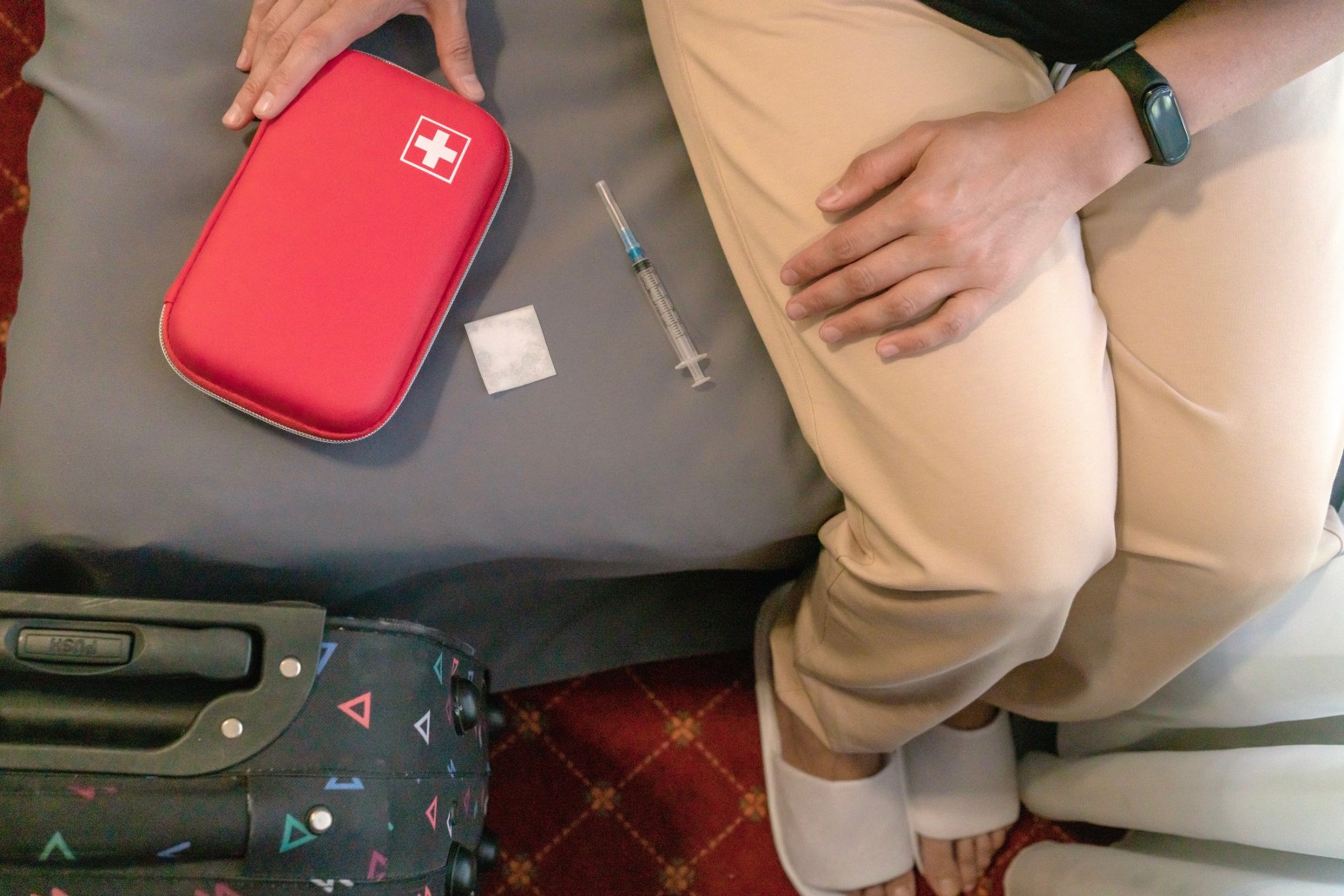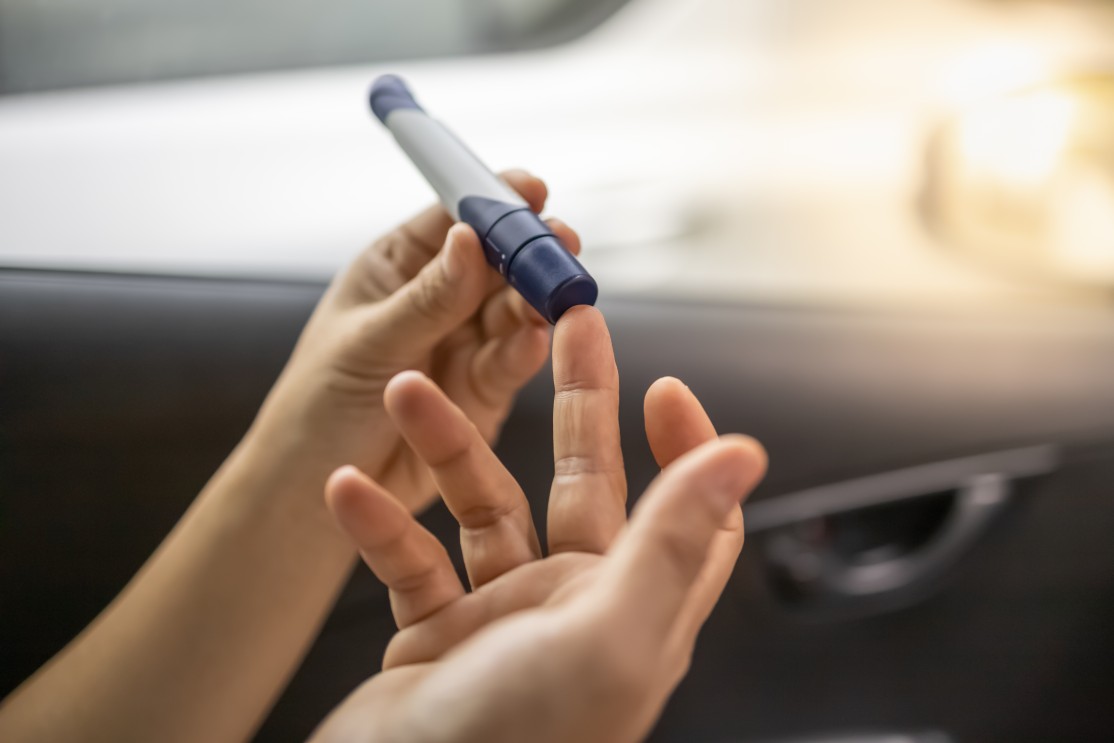10 Tips for Traveling with Diabetes! How to Pack Your Insulin

Travelling surely is exciting, whether for work or leisure, but doing preparations beforehand, especially packing, can be stressful. And your complications can increase if you are diabetic and take insulin to manage your blood sugar levels.
From getting through airport security to making sure insulin is stored properly, you have a lot on your plate. But with thoughtful planning and a few handy diabetes travel tips, you can make your trip hassle-free. Let's look at some crucial tips for managing insulin when travelling, including how to store it, how much to take, and much more.
10 Key Tips to Travel Safely with Insulin
Here are some important tips for diabetic travellers to travel safely with insulin:
1. Pack Extra Insulin Supplies
When travelling, it’s possible your diet changes. You might end up eating foods and in quantities that you normally don't eat at home. Even if you keep an eye on what you eat during your trip, you might need more or less insulin than you usually need. So, to be ready for any situation, always bring more insulin than you think you'll need when going outside. It's also a good idea to carry spare syringes, insulin pens, pump supplies, and alcohol swabs.

2. Use a Travel-Friendly Insulin Cooler
The ideal refrigeration temperature for storing unopened insulin ranges between 2 and 8 degrees Celcius. But you probably will not always be able to maintain this temperature when on the move. And it’s paramount for insulin to stay within a safe temperature range to work effectively.
So, investing in a portable insulin travel case or cooler is a helpful travel precaution for diabetes, especially for extended trips. Insulin travel cases or coolers will help you keep insulin vials and pens at a safe temperature.
3. Carry a Doctor’s Letter
Another important thing you need to keep in mind when travelling with insulin is to request a letter from your doctor detailing your diabetes treatment before embarking on your trip. This letter should mention that you need insulin, syringes, or insulin pumps to manage your diabetes. It’s particularly useful when going through airport security or travelling internationally, as some countries might have stringent regulations around carrying needles or medical equipment.
4. Keep Insulin in Your Handbag
It’s always helpful to carry your insulin and other diabetes management-related supplies in your carry-on luggage. Your checked luggage can be exposed to extreme temperatures or lost during transit, damaging your insulin. Keeping it with you in your carry-on bag will ensure your insulin is accessible in case you need it when on the go.
5. Let Security Agents Know About Your Insulin
Before your luggage is screened at airport security, you should inform the officials that you are carrying insulin and other medicines necessary for diabetic people. Most security staff are familiar with the protocols for managing medical equipment, and thus, clearing them upfront can help prevent your insulin pump or continuous glucose monitor from being exposed to X-ray machines.

6. Let Insulin Come to Room Temperature Before its Usage
While it’s totally safe to use insulin immediately after taking it out of the insulin cooler, you might find it more painful to inject cold insulin. So, one of the key travel precautions for diabetes is to let your insulin come to room temperature before you use it.
7. Know How to Adjust Your Insulin Dosage
Are you entering new time zones or an entirely different climate? You probably don't know how travelling across different climates or time zones can disrupt your insulin schedule. Insulin regimens are often timed according to your body's natural cycle, and moving to a new time zone can require some adjustments.
Therefore, if you are going to use insulin during your trip, talk to your doctor about how to adapt your insulin regimen to the changing time zone or weather without running the risk of hypo- or hyperglycemia. Your doctor will suggest the appropriate dose timing to ensure you're maintaining your normal blood sugar levels when on the move.
8. Avoid Your Insulin's Exposure to Extreme Temperatures
Does your itinerary perhaps involve visiting various places and taking part in fun activities? Whenever you go outdoors, you will always want to keep your insulin away from extremely hot or cold temperatures. It’s important because insulin is sensitive to very high or low temperatures, which can damage its effectiveness.
So, if travelling somewhere hot, don’t leave your insulin sitting outside for too long. If you are going somewhere cold, try to keep your insulin close to your body to maintain its ideal temperature.
9. Plan Your Meals and Snacks Ahead
Understandably, travelling can often lead to irregular eating patterns. But the sad part is it could affect your blood sugar levels. So, to stay on top of your diabetes management, your diabetes travel tip is to plan your meals and snacks beforehand. Consider packing glucose tablets or snacks like granola bars and nuts to manage your potential low blood sugar episodes instantly. Doing this is particularly important during long flights or road trips where you might not get food compatible with your diet.

10. Stay Hydrated, Especially on Flights
When flying, it's critical for everyone to stay hydrated, but diabetics should take extra care. It’s because when dehydrated, your blood sugar levels can increase, and also long flights can leave you feeling fatigued.
So, another key tip for diabetic travellers is to carry a water bottle with them and drink small amounts regularly. Additionally, you should avoid having alcohol and sugary drinks because they can affect your insulin requirements.
Wrapping Up
Travelling with insulin doesn't have to be mind-boggling. Understanding that your insulin needs can probably change during travel and following these tips can help you efficiently manage your insulin and diabetes when on the move. Additionally, speak to a Medanta diabetology doctor before embarking on your journey to figure out meal and insulin dosage changes.
FAQs
1. Can I carry insulin on a plane?
Yes, you can carry insulin on a plane. Always keep it in your carry-on luggage to prevent exposure to extreme temperatures in the cargo hold. Ensure it's in its original packaging with a prescription if required.
2. How should I store insulin while traveling?
Insulin should be stored at a temperature between 2°C and 8°C (36°F to 46°F). Use insulated bags or travel coolers with ice packs to keep it cool, but avoid freezing it.
3. Do I need a doctor's note to travel with insulin?
It's a good idea to carry a doctor's note or prescription, especially for international travel, as some airports may require proof that insulin and syringes are medically necessary.
4. Can insulin be exposed to X-ray scanners at airports?
Yes, insulin is safe to pass through X-ray scanners. However, if you are concerned, you can request a manual inspection of your medication.
5. What should I do if my insulin gets too hot or freezes?
Insulin that has been exposed to extreme heat or freezing temperatures may lose its effectiveness. Replace it immediately with a new vial or pen to ensure proper blood sugar control.
Citations
Jacob, J. (2023). Insulin Storage Guidance for Patients with Diabetes Using Insulin. Indian Journal of Endocrinology and Metabolism, 27(2), 93–95. https://doi.org/10.4103/2230-8210.374161
Johnson, E. C., Bardis, C. N., Jansen, L. T., Adams, J., Kirkland, T. W., & Kavouras, S. A. (2017). Reduced water intake deteriorates glucose regulation in patients with type 2 diabetes. Nutrition Research, 43, 25–32. https://doi.org/10.1016/j.nutres.2017.05.004
Mekary, R. A., Giovannucci, E., Cahill, L., Willett, W. C., Van Dam, R. M., & Hu, F. B. (2013). Eating patterns and type 2 diabetes risk in older women: breakfast consumption and eating frequency. American Journal of Clinical Nutrition, 98(2), 436–443. https://doi.org/10.3945/ajcn.112.057521
Poggiogalle, E., Jamshed, H., & Peterson, C. M. (2017). Circadian regulation of glucose, lipid, and energy metabolism in humans. Metabolism, 84, 11–27. https://doi.org/10.1016/j.metabol.2017.11.017
Richter, B., Bongaerts, B., & Metzendorf, M. (2023). Thermal stability and storage of human insulin. Cochrane Library, 2023(11). https://doi.org/10.1002/14651858.cd015385.pub2


